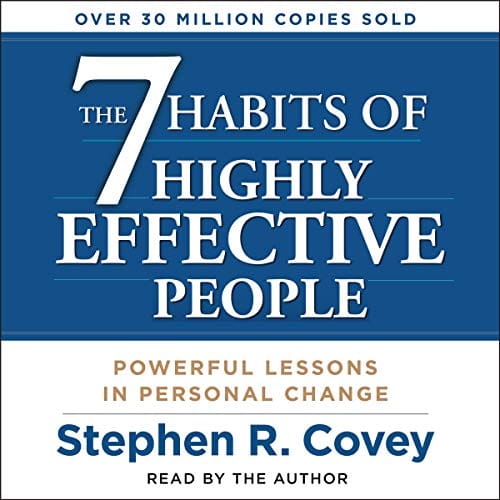The 7 Habits of Highly Effective People
'Sow a thought, reap an action; sow an action, reap a habit; sow a habit, reap a character; sow a character, reap a destiny.'

The 7 Habits of Highly Effective People
Author Stephen R. Covey
Nothing can recapitulate Stephen Covey’s perceptive insights into today’s world better than this quote. Motivational books inspire us to conquer the world, and it is necessary to harvest what we learn through these books to accomplish all the goals that we harness over a lifetime.
However, “The 7 Habits of Highly Effective People” cannot just be termed a motivational book; it is a self-guide that can be read and re-read throughout various stages of life. While Covey published the book in 1989, its lessons remain unassailable and educational even today.
In the book, Stephen Covey aims to steer our lives in the right direction. He guides the reader through seven habits that can change the lives of anyone who aims and hopes to achieve big. The seven habits are: be proactive; begin with the end in mind, put first things first; seek to understand, then be understood; think win-win; synergise; and sharpen the saw. The former three habits delineate the importance of independence and self-dependence. The latter three focus on interdependence, indicating that prioritising our well-being is crucial in learning to help and appreciate others. The final habit is the culmination of all the other lessons and describes the significance of constantly working on ourselves and balancing the various aspects of our lives. Persistent improvement is necessary to lay a foundation of our principles and gradually build a tower of success and fulfil our ambitions.
While the seven habits may seem fathomable at first glance and may seem obvious, the prodigious amount of knowledge poured into the description of the habits is boundless. The book is a treasure trove of real-life examples packed with meaning and enlightenment. As someone who always hoped to improve my abilities in performing tasks when I was younger, just one quick glimpse through the third habit in the book suggested I should glance through the ‘Quadrants of Priorities’ and try the Quadrant II method. The Quadrant II method urges us to prioritise ‘important and non-urgent’ tasks. Without question, following this method has tremendously improved my ability to sort out my priorities.
While reading the book can give the reader the zest to dive head-first into the habits, one must first balance production and production capabilities (P/PC). This concept is encapsulated by Covey through the famous Aesop’s Fable about the goose and the golden eggs. The fable describes a poor farmer who – by chance – finds a goose that yields golden eggs, thus providing riches and immense wealth to the farmer. However, his avarice gets the better of him when he decides to kill the goose and find out if it contains a limitless supply of golden eggs. He found none and was also no longer able to get more eggs. Hence, it is necessary we grant ourselves enough time and patience to master each habit one by one, rather than returning to a slump after a week of adherence to an immensely rigid and impractical routine.
I believe the distinctive quality of the book that has engrossed millions of people across the globe is Stephen Covey’s intuitive style of writing. Philosophy interspersed with humour and authentic, concrete examples renders a sense of relatability and immersion, making the reader feel as if they are reading about aspects of their own life.
Indubitably, I would highly recommend the book to anyone. Even if you are not a bibliophile or have never perused philosophy books, this would be the perfect beginner’s guide, and I hope the habits leave a lasting impression on your mind, just as they did for me.









